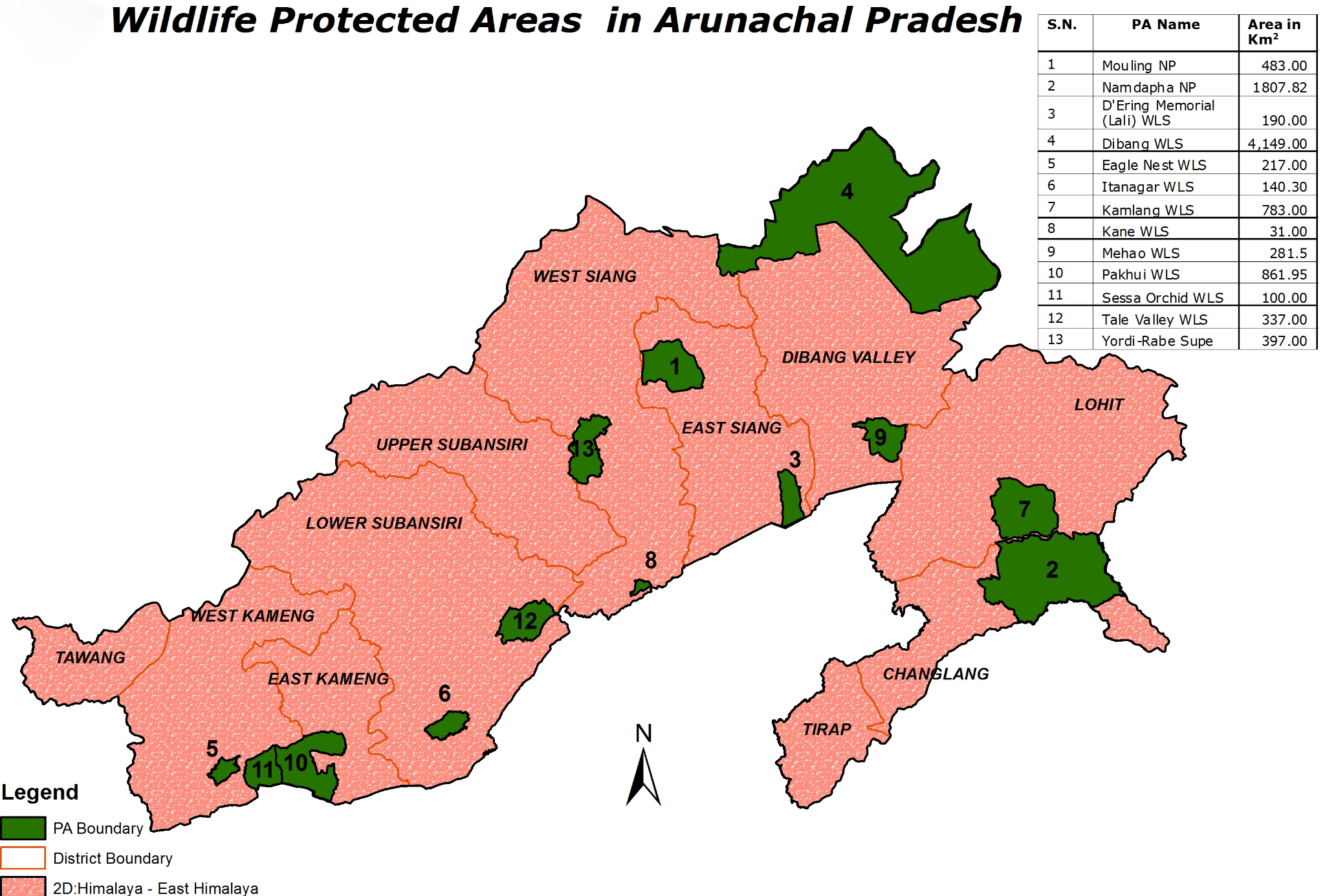Important Facts For Prelims
Namdapha Flying Squirrel
- 25 Dec 2023
- 5 min read
Why in News?
Recently, a Namdapha flying squirrel (Biswamoyopterus biswasi) has resurfaced in Arunachal Pradesh after going missing for 42 years.
- The Namdapha flying squirrel was last described in 1981 based on a single individual found in the Namdapha Tiger Reserve in Arunachal Pradesh’s Changlang district.
What is a Namdapha Flying Squirrel?
- About:

- It is a rare nocturnal flying squirrel species found in the Namdapha Tiger Reserve in Arunachal Pradesh, India.
- It is distinct from the red giant flying squirrel (Petaurista petaurista), another species in the same ecosystem, primarily due to the prominent tuft of hair on its ears.
- The difficulty in locating this species led to concerns that it might have been mistaken for the red giant flying squirrel or, worse, faced extinction.
- Threats:
- The Namdapha flying squirrel is presently threatened by habitat loss and degradation, caused by clear-felling for human settlements, shifting agriculture, and the extraction of non-timber forest products, particularly the leaves of a rattan palm, Zalacca secunda, for use as a roofing material.
- Protection Status:
- IUCN Red List: Critically Endangered
- Wildlife (Protection) Amendment Act, 2022: Schedule I
What are the Key Points About Namdapha Tiger Reserve?
- About:
- Namdapha Tiger Reserve was declared in 1983 as the 15th Tiger Project of the country.
- It was declared a Wildlife Sanctuary in 1972, then a National Park in 1983 and became a Tiger Reserve under the Project Tiger scheme in the same year.
- Namdapha is in fact the name of a river which originates from Daphabum (Dapha is the name of hill, Bum means peak of hill) and meets Noa-Dehing river. This river flows right across in a North-South direction of the National Park and hence the name Namdapha has been given.
- It is located in Arunachal Pradesh. The park is located between the Dapha bum range of the Mishmi Hills and the Patkai range.
- Namdapha Tiger Reserve was declared in 1983 as the 15th Tiger Project of the country.
- Climate:
- Enjoys the sub-tropical climate. The mountainous part has a mountain type of climate while the low-lying plains and valleys experience tropical climate.
UPSC Civil Services Examination Previous Year Question (PYQ)
Q1. Which one of the following National Parks has a climate that varies from tropical to subtropical, temperate and arctic? (2015)
(a) Khangchendzonga National Park
(b) Nandadevi National Park
(c) Neora Valley National Park
(d) Namdapha National Park
Ans: (d)
Q2. Consider the following pairs: (2013)
- Nokrek Biosphere Reserve: Garo Hills
- Logtak (Loktak) Lake: Barail Range
- Namdapha National Park: Dafla Hills
Which of the above pairs is/are correctly matched?
(a) 1 only
(b) 2 and 3 only
(c) 1, 2 and 3
(d) None
Ans: (a)
Exp:
- Nokrek Biosphere Reserve is located near Tura Peak in West Garo Hills district of Meghalaya, India. Nokrek has a remnant population of the Red Panda and is also an important habitat of the Asian Elephants. Hence, pair 1 is correctly matched.
- Loktak Lake is the largest freshwater (sweet) lake in North-East India, also called the only floating lake in the world due to the floating phumdis (heterogeneous mass of vegetation, soil, and organic matter at various stages of decomposition) on it, is located near Moirang in Manipur State, India. Hence, pair 2 is not correctly matched.
- Barail is the highest hill range in Assam and it separates the State of Manipur from the State of Nagaland.
- Namdapha National Park is the largest protected area in the Eastern Himalaya biodiversity hotspot and is located in Arunachal Pradesh in Northeast India. It is also the third largest national park in India in terms of area. It is located between the Dapha Bum range of the Mishmi Hills and the Patkai range. Hence, pair 3 is not correctly matched.
- Therefore, option (a) is the correct answer.





